Frozen Semen – the next breakthrough!
The pioneers were Eilbert Kingma and Glenis Dyason, who as International Horse Breeders were established in 1989 with aim of importing frozen semen from the Celle State Stud. In the 1994, Frozen Semen special in THM, Glenis describes the process:
“The idea came about seven or eight years ago. I was having lessons with my instructor in St Arnaud and I saw a catalogue filled with luscious German horses, particularly from the State Stud and all available in frozen semen. So we worked with the Government for four years, trying to get protocols established, we almost despaired many times – but eventually it came through.”
“It involved lots of talking with the government, explaining that there was a market, and keeping the pressure on. It was pioneering – Australia had been importing cattle semen for years, we just had to keep pushing.”
“We had talked to Celle right at the start, and made an agreement with them, and when the protocol came through four years ago, it was all systems go… The stallions that have been the most popular have been Wenzel, Weltmeyer, Lanthan, Sherlock Holmes and Lorado… Wenzel and Weltmeyer are still very popular. At this stage most people are breeding basically for dressage, but we had a lot of enquiries for people wanting to breeding showjumping last year, and I think now we have the Ramiro Z bloodline, more people will be breeding showjumpers.”
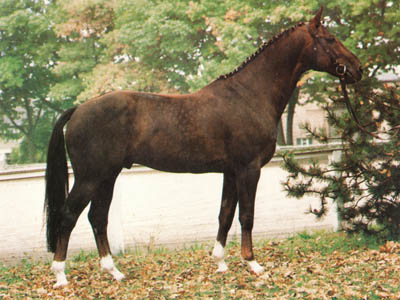
In 1989, the first year of operation, IHB imported a sum total of 12 doses, all from the stallion, Wenzel I. Now they have hundreds of stallions on their roster, and the field is increasingly competitive.
Also in 1989, an ad for the Northern Warmblood Stud announced the availability of transported semen (collected under the guidance of equine reproduction specialist vet, Angus McKinnon) for the Sauer and Powles stallions. The technology was on the move for imported and local stallions.
In 1982 , the Dutch couple, Dirk and Sicca Dijsktra took over Fred Hoevenaars’ Australian Equestrian Academy & Stud near Geelong. Soon they were standing four stallions, Duellschütz, King, Granada and Luther (by Ludendorf).
1993 also sees the hotting up of the frozen wars with AEA offering Dutch semen from the VDL stud of the well-known jumping breeder, Weipke van der Legeweg.
The same year, Ulrich Klatte started importing frozen semen from the family farm in Germany, and in 1994, Holger Schmorl of Kinnordy started imported frozen semen from Germany’s Böckmann Stud, but with the warning:
“I am worried about the whole issue of ‘frozen semen’ because suddenly there is an unbelievable variety of stallions on the market in Australia. I have witnessed a similar phenomenon in Denmark, 20-30 years back. They almost lost everything because they were using stallions from nearly everywhere – Germany, France, Holland, Trakehners from Poland and Russia, you name it. Luckily they realised early enough that they were running into a death trap, and followed the advice of some of the leading breeders and administrators of the bigger breeding societies of Germany to establish a homogeneous pool of broodmares and to concentrate on the development of a certain type, and to turn away from bastardisation.”
(Page 85, August 1994)
IHB as the first importers also established the format for frozen semen sales, with the mare owner buying enough semen for three inseminations. The deal was if you got real lucky, you could end up with three mares in foal (and get a service certificate for all three) but on the other hand, you could end up with no mares in foal – and no refund.
There were hiccups along the way as vets learned how to breed with the frozen semen, and there were a few stallions imported whose semen didn’t work, and gradually clever customers started to pick the ones – like Weltmeyer – that seemed to work every time.
When others entered the market, they started to offer variations on the original deal. AEA offered a first insemination at the full fee but should the mare not go in foal first time, there was very much cheaper semen available for second or third or even fourth breedings.
The first to offer mare-in-foal deals were the Swedish couple, Bjorn Svardson and Eva de Richebourg of 4 Aces in 2000, where they advertised the stallions from the famed Flyinge Stud in Sweden on a ‘no pregnancy, no fee’ basis.
But there were some spectacular furores. None better than the (in)famous Frozen Assets venture, advertised for the first (and only) time in the July 1996 issue of The Horse Magazine. In a startling double page spread of colour, suddenly all the world’s most exciting horses were on offer: Donnerhall, Caprimond, Aktion, Rubinstein, Matador, Quito de Baussy and Biotop. The advertisement arrived at the magazine while Roz and I were in Europe, and I was pretty amazed when I returned home and saw it for the first time.
For a start, Rolf Klimke had told me that Biotop had not even been collected for frozen semen (remember until you actually collect, freeze and then inseminate a mare, it is impossible to know if the stallion can supply viable frozen semen) much less offered for sale. And as for Rubinstein, I had asked Mrs Vorwerk at Wiesbaden show when I was away, about the same time the ad appeared, whether we could buy Rubinstein semen for Australia, and I was told that her stud did not meet the Australian quarantine requirements and that she could not supply semen to Australia. I immediately wrote an editorial in the next magazine, warning readers, and detailing my conversation with Mrs Vorwerk.
And of course, months later, when people rang me with a sorry tale of how they had paid all this money, and still hadn’t received any semen, I’d ask them, ‘But did you read my editorial?’ ‘Oh yeah I read it but I really wanted to breed to Rubinstein…’
The company, Frozen Assets was run by Jamon and Jonica Horner, but the business was later taken over by Jonica’s father, Graeme Grubb, who promised customers ‘24 hour service, 7 days a week’ – that might be the case, but there was still no semen. Finally in January 1997, a shipment did arrive with semen from Donnerhall, Donnerwetter and Don Primero, and it was despatched to seven vets in four states. Then AQIS discovered that the semen did not have the right papers – it seems that the Donnerwetter semen came with a certificate indicating that it was collected in Germany in 1996 – trouble was Donnerwetter had permanently left Germany for the USA in 1989! It seems that the semen was eventually destroyed by AQIS, and as for Mr Grubb, well in the year 2000 he was sentenced to a 10 year gaol sentence for embezzling $5.2 million in investment funds that had been entrusted to him!
I guess the Grubb case, makes all the subsequent defaults and delays in the frozen semen business look fairly trivial, and most breeders using frozen semen, seem to be happy with the results. There has been some disquiet recently, when as breeders realized the possibility of getting more than the traditional three mares in foal using the new low dose insemination technique – only to find the semen suppliers trying to limit the number of foals allowed. As the leading French semen dealer, Arnaud Evain said to me:
“You are either selling semen, or a pregnancy. If you are just selling the semen, then it is up to the customer what he does with it and how many mares he covers with it. I said this to the owner of Quidam de Revel when he changed from selling the mare in foal, to selling just the semen. You are asking me to cut this semen and use the low dose technique and get as many mares in foal as I can, I told him.”
Some conclusions…
Performance test or no performance test – that certainly was the burning question in the early years of Warmblood breeding. My own feeling is that this emphasis, missed the fact that the performance test was only one of a whole series of assessments that operated in Germany: foal assessments, mare shows, and in depth analysis of progeny by experts. In Australia, the fixation was just on this one magic bit of paper – and history would seem to indicate that the paper was not so important.
We saw some licensed and performance tested stallions that came to Australia who were successful sires – we also imported some that were total duds, despite having all the right bits of paper. If the Germans suddenly decide to export a licensing winner, or a performance test champion, it might be wise to ask, why is this horse for sale? Why don’t they want him, especially when stallions can make so much more from service fees in Europe than they can in Australia? It is logically possible that unlicensed horses might slip under the radar, and be better stallions than the ones that have gone through the licensing / testing process.
Certainly Gerhard Quast broke all the rules. Unlicensed, untested stallions (AND with trotter mares!!!) yet looking at the results, Mr Quast has to be counted one of the most successful Australian Warmblood breeders of them all!
Nor would it seem that failing the AWHA Performance Test was any hindrance to becoming a successful stallion. The Hanoverian, Daley K was failed by the AWHA panel of classifiers – and yet he has proven himself to be a more than useful sire of rideable athletes… mainly eventers and showjumpers but dressage horses as well. His most famous foal is Warlord who – ridden by Gavin Chester – represented Australia at the World Cup Final in Las Vegas in 2007. At the age of 24, Daley K continues to get mares in foal, but he might have had more opportunities had he been granted the magic bit of paper from the AWHA. It might be pointed out that Daley K’s success rate has been infinitely higher than any of the AWHA approved stallions that the classifiers themselves stood.
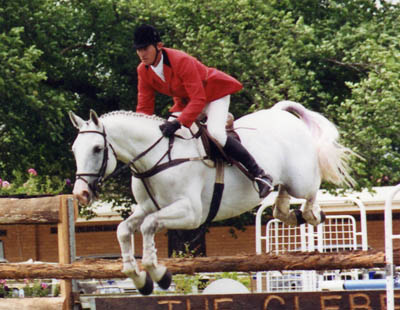
The other problem in Australia when it comes to assessment, is the relatively small number of top professional riders. Thus if progeny of a certain stallion end up with this elite little group, that stallion may acquire a totally unmerited reputation. I remember the Australian Dressage Championships in Queensland, where the top classes were dominated by Domherr progeny. Wonderful horses? Well that’s not what the riders thought… but they were paid to ride them, and did a good job. In Germany, although very talented riders can help ‘make’ a stallion, there are many more professionals and a slightly more level playing field.
If we look at the results of the Australian Young Horse Championships at the 2006 Dressage and Jumping with the Stars, we can see how far we’ve come since 1968.
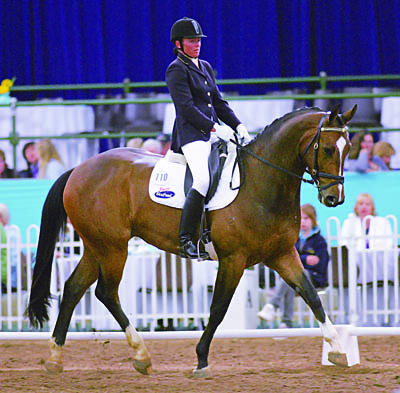
In the four year old class, the winner was Stylist by the imported Contango II out of a Thoroughbred mare. Second to a frozen embryo transplant, Neversfelde Weltsong (Weltmeyer / Kassiber), third, Just Elegant (by Jive Magic out of Sayonara, by Silky Baby out of the imported Hanoverian, Gina), fourth – Reverence F (by Regardez Moi / Salute), fifth – Jazz Song (Jive Magic / Wenzel), sixth – Widgeway Recluse ( Rotspon / Ludendorf), seventh – Larapinta Freespirit ( second generation frozen semen, by Freestyle out of a Zeoliet mare), eighth – Larapinta Crackerjack (another double dose of frozen, by Krack C out of a Concorde mare), ninth – Ramses (Grand Kavalier / Valuta), and tenth to Fairbanks Picasso (Fairbanks Pavarotti / Monrand).
Once again we see the same mix of frozen and local stallions in the five year old class. The winner, Barjar Winston is by Weltmeyer out of a mare by Valuta. Second to Adlanta Rose (frozen semen from Rotspon out of the FEI competitor, Adloo Georgia by the imported French Anglo Arab, Victorieux.) Third – Jeff the Chef W (Jive Magic / Salute), fourth – Greenoaks Weltman (Man About Town / Weltmeyer), fifth – Trackstein Schyborne (Weltmeyer out of a mare by the Thoroughbred, Meriville who stood at APH and sired Dressage Elite Squad member, APH True Seville), sixth to the imported Friesian, Hilwert L, seventh – DP Wedonna (frozen semen / embryo transplant, by Weltmeyer out of Donna Carrera, an imported mare by Donnerhall. Donna Carrera was a winner at one of the very first Young Dressage horse classes, and was traveling reserve for the Australian Olympic Team in Hong Kong), eighth – Donatella ( Don Schufro / Northern Congress), ninth – Flowervale Ferraza (Olympic Ferro / Valuta ) and tenth, APH Ludo (Lübeck / Lakai).
The six year old class was taken out by the imported mare, Donner Carina (Dormello / Donnerschwee), with second to the locally bred, Talien (by the Anglo Arab, Box Hollow Crusader out of a mare by the imported Hanoverian, Daktylus). Third is the imported stallion Donnerblitz (Donnerhall / Landadel). Fourth – Anastasia Romanov (Aaries / Ben Goblin), sixth the locally bred Jem Valentino (Shylock / Ballyrogan), seventh – Fairbanks Whitney (by Weltmeyer out of a Contango II mare). This horse was bred at Fairbanks Stud in Queensland, another of the pioneers of frozen semen breeding. Stud principal, Russell Davidson started work with frozen semen back in 1998/9, and since then has bred some 50 foals… and yes, he set up his own FWQ Fairbanks Warmblood Studbook in 1999. ). Seventh to Duelloak Aragon (Heatherton Park Albury / Argentinus), eighth – Heathmont AEA (Just de Pomme / Dutchman), nineth – Belcam JK Andre (BJ Kaneto Artimus (by Argentinus out of a Falkland/Monopol mare) out of a mare by the imported Hanoverian, Winterkönig).
The jumping classes also demonstrated how far Warmblood breeding has come in this country – the poor old Racehorse off the Track is fast becoming an endangered species, although the Clydie cross refuses to go away.
Winner of the four year old class was Belcam Catalyst (Contango II / Lucindale). Second to Sarino Miguel (Clydesdale / Arab cross), third – Bellhaven Secret (by the Irish showjumping star, Cruising out of Join Hands), fourth – Cerando Cesano II (Federspiel / Nadia Stones), fifth – ASEA Liason (Ard Black Cat / Family Ties xx), sixth Cooper (Cooperit / Lord), seventh – GP Top Dollar (Premier des Hayettes ), eighth – Valhalla ( Quattro / Clinton), ninth – Belcam Chanita (Capone / Zoning), tenth – Tickety Boo (Shylock / Flooding xx).
The five year old class was won by an imported mare, Florina (For Feeling / Airport). Second another import, this time the stallion, ASB Conquistador (Clinton / Heartbreaker), third another ASB import, Corregidor (Upsilon / Heartbreaker), fourth a purpose bred Thoroughbred, Glendale Dollar Bug (by the Grand Prix jumper stallion, June Bug who is by Dusky Hunter, THM jumping stallion of the year in 2004), fifth to that big Holstein Stud in the West, Noblewood Park Cassini’s Girl (by Cassini II out of a Ladalco mare). Sixth – ASB Cara Mia (she was imported as Briglace – Cardento/ / Heartbreaker), seventh – Brannic , eighth – RSB Jacana (Metall / Northern Congress), ninth – Lacona Amazing (Belcam Agassi / Jaguar), tenth – Holmwood Larrikin (Limbo Rock).
The six year old class saw another Belcam horse at the top of the ladder – Belcam Alibi (Belcam Agassi / Grannus II). Second – Denison Park Silky (Falkrich / Miss Monnas), third – Belcam Cosmic (Contango II / Frohlich), fourth – Penrose (Icon / Daley K by the imported Daktylus), fifth – Ponderosa Stud Leroy (Lontano / Aramis. Lontano is by Lucano and out of a Schwandor mare), sixth – Kitty Hawk (Ard Black Cat / Cloudy Girl), seventh – Blackall Park Winchester (Daley K / Balmoral Boy xx), eighth – Pepe Le Peu xx (Polish Navy / Conquistarose), nineth – Jenjan Antiquity (Athletico / Winton Lad) and tenth – For Fun xx (King Tristram / Kingston Seattle).
The seven year old class was won by La Laina (a product of Peter Powles’ bloodlines, by Northern Villius II out of Northern Jedda), second Belcam Advisor (Belcam Agassi / Belcam Gratia). Third that good old Clydie cross again – Moonstone (Mr Sandman / Aloha). Fourth – Fairbanks Catargo (frozen semen by Indoctro out of a mare by Grannus II – this young stallion represented Australia at the World Championships for Young Horses 2005 after he won the 4 year old class at the 2004 DWTS). Fifth, the imported gelding, GH Levitate ((Levantos I / Grannus), sixth – Belle Giselle (Burggraaf / Salmon Leap xx), seventh – Belcam Armada (Belcam Agassi / Falkland).
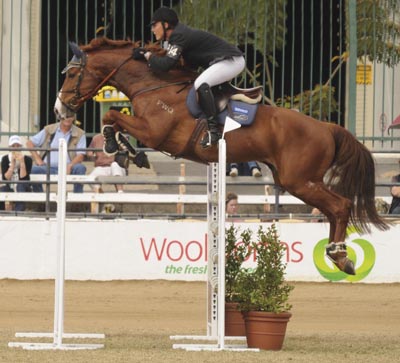
Certainly we are breeding some classy young horses. There are problems finding classy riders to go with them (so speaks a breeder… from the heart) and our Young Horse Championships suffer from the assumption by the organizers that Grand Prix dressage judges are competent to judge the young horse classes also. Wrong. If the young horse championships are to fulfill their role, then specialist young horse judges are vital.
In closing, I guess by now you have got the message that I feel that one of the real tragedies of our Warmblood Breeding has been the establishment of lots and lots of little Stud Booklets, rather than one large and functional breeding association. Had the existence of our first studbook been legally established, the way it is in most European countries, then disaffected members would not have been able to simply walk away and start a book of their own. The strong personalities, instead of being able to dominate their own little organizations, would have been forced to accommodate the views of others, they would have balanced each other out, hopefully resulting in a strong and vibrant group. Perhaps, with the advent of EI, and the need for a passport system, it is not too late. Perhaps there is still time for all those people who want to breed Warmblood performance horses in Australia to come together and form one big umbrella organization – with every right to maintain their identity as specific interest groups within that larger organization.
To coin a phrase… dream on, and may all your foals have straight legs and pretty heads. And thank you all the breeders who have taken the trouble to contact THM expressing their enjoyment at this historical review, especially those newer breeders for whom it has largely been ‘news’.
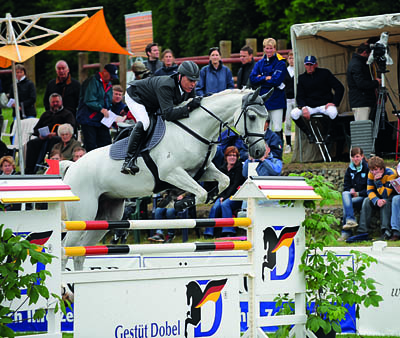

Thankyou Mr Hector, for your efforts in producing these articles.
I guess the big question for me now is…. How are we training the riders for the horses we are breeding? I for one, would be very interested in reading a serious of articles by you that covers the EA’s ongoing rider development program and the success (and failures) it has established.
Great article THM. Really enjoying yr articles on breeding.